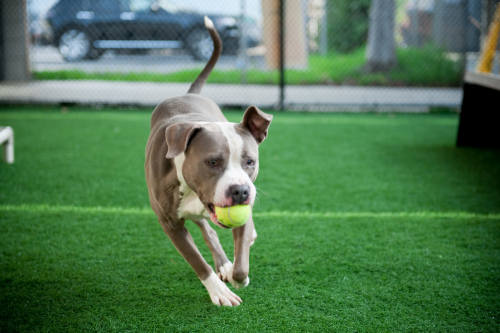 Q: My dog keeps yawning when we are at the local dog park. I thought it was because he was board and tired but my friend says that yawning means he is stressed. Who is right?
Q: My dog keeps yawning when we are at the local dog park. I thought it was because he was board and tired but my friend says that yawning means he is stressed. Who is right?
A: Dogs communicate constantly with us and each other but most of the times we miss what they are saying. Below are examples of behavior a dog shows when they are uncomfortable (your friend is right about the yawn!) None of these signals happen in a vacuum so you must look at the rest of the dog (body posture, tail, head, eye contact) in order to properly interpret what the dog is trying to tell you.
Signs to look for that means a dog is stressed:
- Yawning – A common way for dogs to relieve stress, not just when ready for a nap.
- Teeth chattering – Seen both when dogs are stressed or highly aroused with excitement (ie right before play). Take into account the look and demeanor of the entire dog before deciding on which case you are dealing with.
- Lip Licking –With no treat in sight, tongue curls up and licks front or side lips to signal stress.
- Tongue Flicking -Tongue comes straight out then flicks up to touch nose or air which signals submission or a desire to have you closer.
- Whale Eye– Dog exposes the white of his/her eyes. This is a distance increasing signal and should be respected as such since it is often followed by a bite. Move away immediately!
- “The Freeze”- This is defined by a momentary “freeze” of all body movements. It is often accompanied by a hard stare or held breath and is another distance increasing signal that should not be ignored. Move away immediately!
- Pacing – Constant walking in circles or back and forth. Indicates a inability to settle and is therefore a sign of stress.
- Excessive Shedding-If a dog suddenly starts shedding large amounts of hair (you will almost see a cloud of fur coming off the dog) means the dog is under extreme stress.
For more information on learning body language, a great video to watch is The Language of Dogs by Sarah Kalnajs.
Thank you Colleen Demling of Pawtopia for this article!













